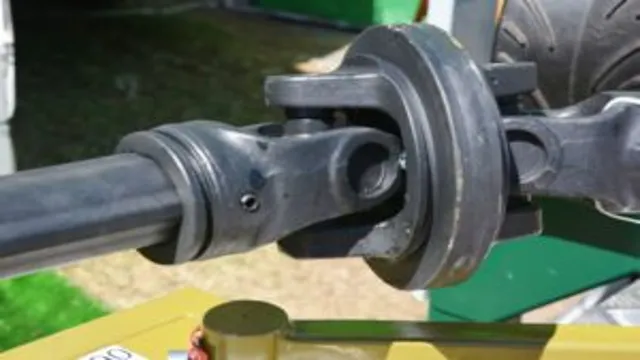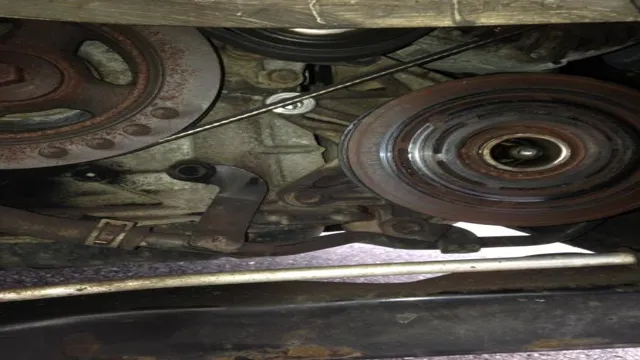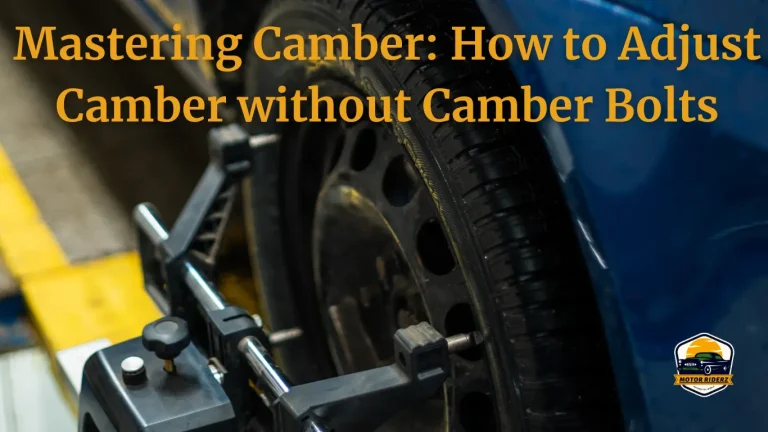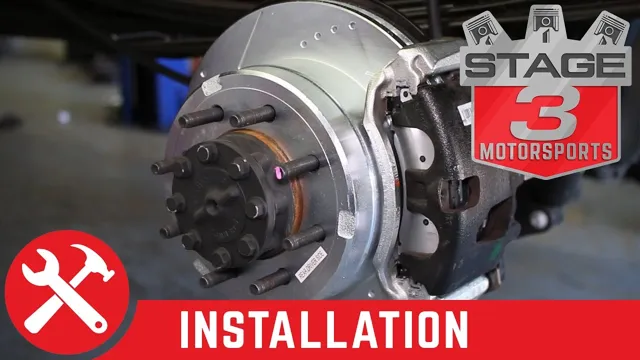Unlocking the Secrets: DIY Guide on How to Balance Your Driveshaft at Home!
Let’s face it, having a balanced driveshaft is a crucial part of ensuring smooth and safe operation of your vehicle. But sometimes, you may find yourself in a situation where a slight imbalance in the driveshaft is causing vibrations and noise. Whether you are a seasoned mechanic or a DIY enthusiast, balancing the driveshaft at home can save you time and money.
In this blog, we’ll guide you through the basics of balancing driveshaft and offer some valuable tips to help you tackle this task with ease. So, grab your tools and let’s get started.
Why Balance Your Driveshaft?
If you’re experiencing vibrations or wobbling in your vehicle, it may be time to balance your driveshaft. This is an important step in maintaining a smooth ride and avoiding potential damage to other parts of your vehicle. But how can you balance your driveshaft at home? Firstly, you will need to invest in a balancing kit and a good set of wrenches.
Begin by marking the driveshaft’s orientation and removing it from the vehicle. Then, slide the balancing kit’s yoke onto the shaft and locate the heavy spot. Add weights until the yoke rests level.
By doing so, you can ensure a well-balanced driveshaft and enjoy a smoother and safer ride. By taking this small but important step, you can avoid costly repairs and prolong your vehicle’s lifespan.
Preventing Vibration and Damage
One of the most crucial steps in preventing vibration and potential damage to your vehicle is by balancing your driveshaft. The driveshaft is responsible for transferring power from the engine to the wheels, and any imbalance can lead to excessive vibration, noise, and even damage to other components of your vehicle. By balancing your driveshaft, you ensure that its weight is evenly distributed, reducing the likelihood of vibration and potential wear and tear on your vehicle.
This is especially important for high-performance vehicles, where even the slightest imbalance can lead to major issues. So, if you notice any unusual vibrations or noises coming from your vehicle’s drivetrain, it may be time to have your driveshaft balanced to ensure optimal performance and longevity of your vehicle. Trust us; it’s worth the investment.
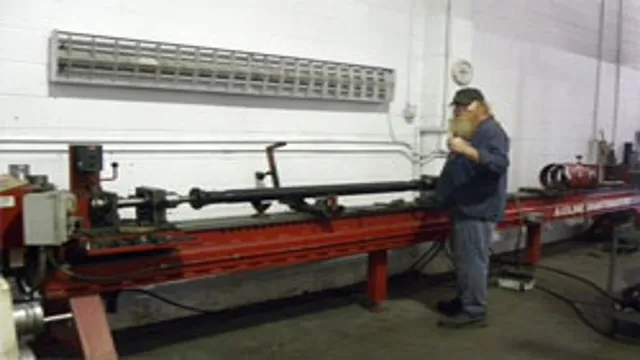
Improving Performance and Efficiency
If you’re looking to improve your vehicle’s performance and efficiency, you may want to consider balancing your driveshaft. A driveshaft that is out of balance can lead to uneven wear and tear on your vehicle’s components, such as the transmission, differential, and tires, which can ultimately lead to costly repairs down the road. Balancing your driveshaft involves adding or removing weights to ensure that it spins evenly at high speeds, reducing vibrations and increasing overall performance.
By balancing your driveshaft, you can also improve fuel efficiency, as a balanced driveshaft reduces friction and drag on your vehicle’s engine, leading to a smoother and more efficient ride. Don’t overlook the importance of balancing your driveshaft if you want a safe, reliable, and efficient vehicle on the road.
Tools You Need
If you’re experiencing vibrations while driving, your driveshaft may be out of balance. The good news is, you can balance your driveshaft right at home! However, there are some essential tools that you will need to get the job done. Firstly, you will need a dial indicator to measure any runout in your driveshaft.
You will also need a pinion flange holding tool to secure the differential yoke while you remove the pinion nut. A set of jack stands and a floor jack will also be necessary to lift the vehicle and secure it in place. The final tool required is a balancing machine that can handle the weight of your driveshaft.
These tools, along with some patience, will allow you to balance your driveshaft and bring smoothness back to your ride. Remember to take your time, work safely, and don’t hesitate to ask for expert advice if needed.
Weight Scale and Measuring Tape
If you’re trying to stay healthy and achieve your ideal weight, two important tools you’ll need on your journey are a weight scale and measuring tape. These simple yet effective tools can help you track your progress and stay motivated to reach your fitness goals. When it comes to choosing a weight scale, you’ll want to look for one that is accurate and easy to read.
Digital scales are a popular choice because they give precise measurements and often have features like body fat percentage calculators. Measuring tape is also an essential tool for tracking your progress. By measuring key areas like your waist, hips, and arms, you can see how your body is changing over time.
Plus, measuring tape is great for getting accurate measurements for things like clothing and body mass index calculations. Overall, investing in a weight scale and measuring tape is a smart move on your fitness journey that can help you see progress and stay motivated to reach your goals.
Balancing Stand and V-Blocks
When it comes to balancing stand and V-blocks, having the right tools can make all the difference. Firstly, a sturdy stand is essential, preferably made of strong materials like steel. The V-blocks themselves should also be of high quality, with precise angles and measurements to ensure accurate balancing.
In addition, a dial indicator can be invaluable when it comes to fine-tuning your balance, allowing you to make small adjustments to achieve the perfect alignment. Finally, a steady hand and a good eye are just as important as any tool. With a little practice and patience, you’ll soon be able to balance any block and stand combination with ease.
Welding and Grinding Equipment
When it comes to welding and grinding, having the right tools is crucial. One of the most important tools you need is a welding machine. This device creates an electric arc that melts the metal and fuses it together.
However, not all welding machines are the same, so it’s important to choose one that’s appropriate for the job. For example, if you’re welding thick metal, you’ll need a machine with a high amperage output. On the other hand, if you’re working with thin metal, a lower amperage machine is more appropriate.
Another important tool is a grinding machine, which is used to smooth out rough edges and welds. Grinding machines come in various sizes and shapes, including handheld and tabletop models. It’s important to choose the right machine for your needs to ensure that your welding projects are completed safely and efficiently.
Remember, having the right tools is essential for a successful welding and grinding project, so invest in quality equipment that will stand the test of time.
Step-by-Step Process
Balancing your driveshaft at home might seem like a daunting task but with the right equipment and a little know-how, it can save you a lot of time and money. To start, you’ll need a jack, jack stands, a dial indicator, and clamps. First, place your car on level ground and raise the wheels off the ground using the jack.
Then, secure the car on the jack stands. Next, attach the dial indicator to the yoke of the driveshaft and rotate it to get a reading. If the reading is more than .
007 inches, you’ll need to add or remove weight from the driveshaft to balance it. This can be done by adding or removing clamps in specific areas until the reading is within .007 inches.
By following these steps, you’ll have a well-balanced driveshaft ready to perform at its best.
Marking and Weighing the Driveshaft
When it comes to installing a new driveshaft in your vehicle, one crucial step is marking and weighing it properly. This ensures that the weight is balanced, and any vibrations are eliminated. The process of marking and weighing a driveshaft is pretty straightforward.
First, mark the driveshaft’s orientation to ensure that it goes back into the vehicle the same way it came out. Then, use a scale to weigh the driveshaft and compare it to the manufacturer’s specifications. If the weight is off, you’ll need to balance it using weights added to the driveshaft.
Once the driveshaft is balanced and weighed correctly, you can move on to the next step of the installation process. Properly marking and weighing the driveshaft is essential for a smooth and safe ride. Don’t skip this step if you want to avoid any unwanted issues down the road.
Identifying Heavy Spots and Making Adjustments
As a bowler, identifying heavy spots on the lane can be a game-changer. Heavy spots refer to specific areas on the lane where the oil pattern is denser, causing bowling balls to slow down or hook more. These spots can affect your shot’s speed and trajectory, making it crucial to adjust your game accordingly.
To identify heavy spots, start by watching how your ball reacts during practice shots. If you notice your ball starting to hook earlier or slowing down, take note of that spot and make adjustments to your approach to compensate for the denser oil pattern. You can vary your speed, change your angle of delivery, or switch to a ball that will better handle the heavy spot.
With practice and observation, you’ll be able to identify heavy spots quickly and adjust your game for better results.
Testing and Rebalancing
Testing and rebalancing is an essential process that can help investors to optimize their portfolios. It involves periodic checks on the performance of the portfolio and making adjustments to it to ensure that it stays aligned with the investment goals. This process begins with identifying the desired asset allocation and creating a well-diversified portfolio accordingly.
Once the portfolio is constructed, it’s important to regularly review it and assess its performance against benchmarks and other market indicators. This helps to identify any underperforming assets and make necessary adjustments to rebalance the portfolio. Rebalancing typically involves selling over-performing assets and buying underperforming ones to bring the portfolio back in line with its target allocation.
Overall, testing and rebalancing is a crucial way to manage investment risk and help ensure that portfolios remain aligned with investment objectives.
Final Thoughts and Recommendations
After understanding the importance of a balanced driveshaft, you may be wondering how to balance it in the comfort of your own home. The process may seem daunting, but it is possible with the right tools and some patience. Start by securing the driveshaft to a secure surface and marking it to determine where the weight needs to be added or removed.
Next, attach the weights with a clamp and test the balance by rotating the shaft. Continue adjusting until the shaft is perfectly balanced. It is important to note that if you are not confident in your ability to balance the driveshaft, it is best to take it to a professional.
Overall, balancing the driveshaft is a crucial part of maintaining a smooth and safe ride, so it is worth taking the time to do it correctly.
Conclusion
Congratulations! You have successfully learned how to balance a driveshaft at home. Now, you can impress your friends, save some money, and ensure the smooth functioning of your vehicle. Just remember to take your time, follow the steps carefully, and use the right equipment.
And who knows, maybe one day you’ll be balancing driveshafts for all your neighbours and be the talk of the town. Happy balancing!”
FAQs
What are the symptoms of an unbalanced driveshaft?
The symptoms of an unbalanced driveshaft may include vibration, noise, and uneven wear on tires and other automotive components.
How can you tell if your driveshaft needs to be balanced?
You can tell if your driveshaft needs to be balanced by paying attention to vibrations, unusual noises, and uneven wear on vehicle components such as tires and bearings.
Can you balance a driveshaft yourself at home?
Yes, you can balance a driveshaft yourself at home using a balancing machine or a vibration analyzer.
What tools do you need to balance a driveshaft at home?
You will need a balancing machine or a vibration analyzer, weight placement and calculation tools, and replacement parts if necessary to balance a driveshaft at home.
Is it safe to drive with an unbalanced driveshaft?
No, it is not safe to drive with an unbalanced driveshaft as it can cause damage to other parts of your vehicle and increase the risk of accidents due to vibrations and noise.

